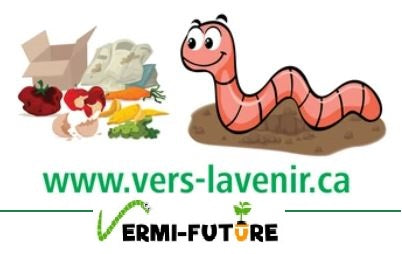Problems and solutions
Main problems with a vermicomposter
| Smell of putrefaction | There is too much food. | Decrease food intake. |
| Ammonia smell | There is too much nitrogen-rich material. (green and fresh materials) | Balance the system by adding carbon-rich materials. (newsprint, dead sheets, shredded cardboard) |
| Smell of sulfur (rotten egg) | The litter is waterlogged and there is a lack of air at the bottom of the vermicomposter. | Add dry shredded newspaper or cardboard. Open the lid and turn down the feed for a while. |
| Worms come out of the vermicomposter | The litter is too wet or too acidic. | Add newspaper or cardboard as before, for acidity, add dried and powdered eggshells or a little wood ash. |
| Fruit fly | Food exposed to the open air attracts flies and allows them to lay their eggs. | Always cover the waste with a layer of litter. The use of beneficial nematodes and/or a little diatomaceous earth is also highly recommended. |
| Ant | The inside of the vermicomposter is too dry. | Coat the legs of the vermicomposter with Petroleum jelly and moisten the tanks |
Remember that vermicomposting remains a natural process. It is not an exact science. This guide aims to explain the mechanisms involved and offers you a method of use. Make your own experience, compare your contributions to understand and improve.
